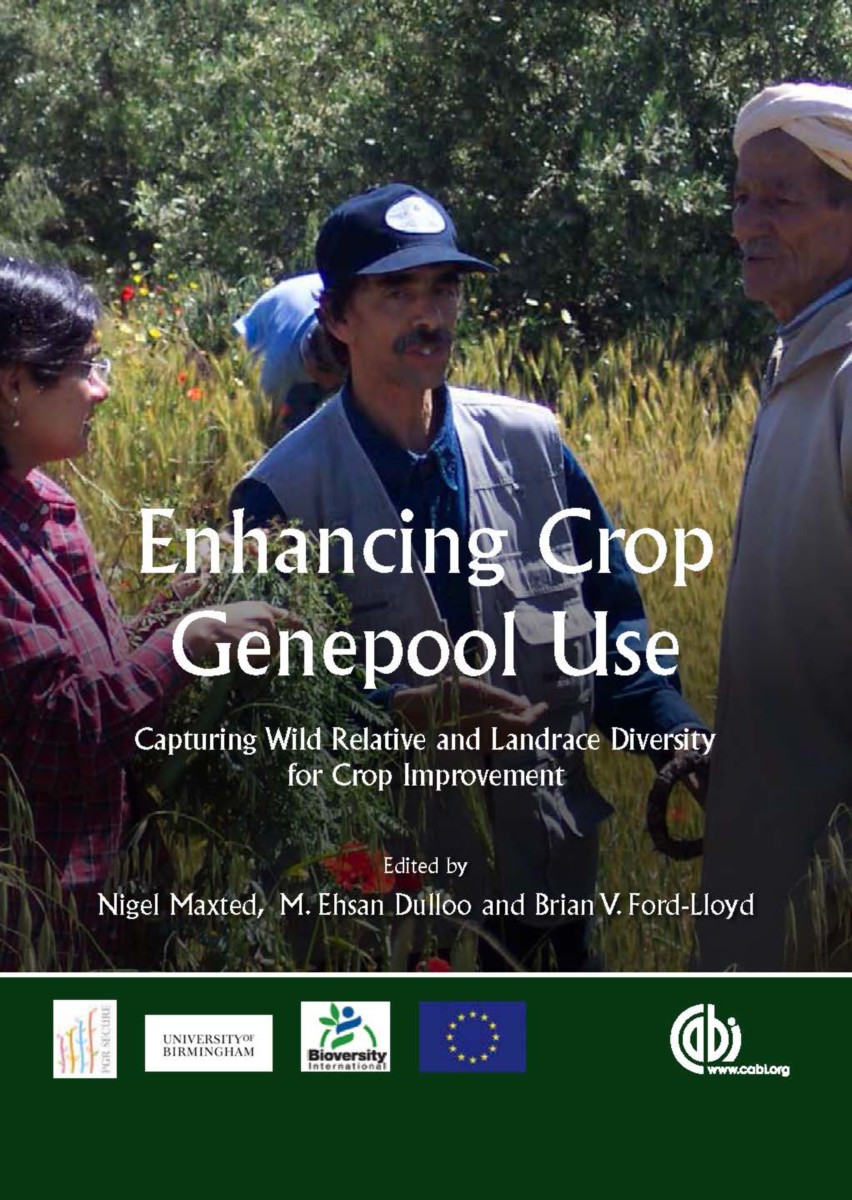Enhancing Crop Genepool Use
Capturing Wild Relative and Landrace Diversity for Crop Improvement
- Publisher
CABI - Published
6th July 2016 - ISBN 9781780646138
- Language English
- Pages 480 pp.
- Size 6.75" x 9.5"
- Images tables, figures & color illus
Based on the 2014 "Enhanced Genepool Utilization: Capturing wild relative and landrace diversity for crop improvement" conference, in this book a team of international contributors address all aspects of utilization and conservation of crop wild relative (CWR) and landrace (LR) diversity for crop improvement.
Focusing on characterization techniques, conservation strategies, facilitating CWR and LR use and informatics development, Enhancing Crop Genepool Use highlights exotic plant germplasm as a potentially critical but neglected resource for crop improvement. Novel characterization techniques and conservation strategies to identify and preserve CWR and LR traits to increase options for crop improvement as a means of underpinning food security in the face of climate change are demonstrated, and the current status and future enhanced utilization of CWR and LR diversity for improving agricultural production and sustaining the environment are explored.
Part I: Breeder's use of exotic germplasm
1: Using phenomics and genomics to unlock landrace and wild relative diversity for crop improvement
2: Pre-domesticating wild relatives as new sources of novel genetic diversity
3: Unravelling quinoa domestication with wild ancestors
4: Screening wild Vigna species and cowpea (Vigna unguiculata) landraces for sources of resistance to Striga gesnerioides
5: Wild Lactuca saligna a rich source of variation for lettuce breeding
6: Capturing wild relative and landrace diversity for crop improvement using a new selection tool to exploit genetic resources in durum wheat
Part II: Improving access to PGRFA
7: How the Focused Identification of Germplasm Strategy (FIGS) is used to mine plant genetic resources collections for adaptive traits
8: Predictive characterization methods for accessing and using CWR diversity
9: Keeping a finger on the pulse: monitoring the use of CWR in crop improvement
Part III: CWR conservation
10: Joining up the dots: a systematic perspective of crop wild relative conservation and use
11: Europe’s crop wild relative diversity: from conservation planning to conservation action
12: An approach for in situ gap analysis and conservation planning on a global scale
13: The distributions and ex situ conservation of crop wild relatives: a global approach
14: National strategies for the conservation of crop wild relatives
15: Crop wild relatives, a priority in Jordan? - developing a national strategy for the conservation of plant diversity in Jordan using a participatory approach
16: Establishing systematic crop wild relative conservation within the United Kingdom
17: Optimized site selection for the in situ conservation of forage CWRs: a combination of community and genetic level perspectives
18: Developing a crop wild relative conservation strategy for Finland
19: Developing national crop wild relative in situ conservation strategy for Lithuania: creation of national CWR inventory and its prioritization
20: Priorities for conservation of crop wild relatives at Indian National Genebank
21: Strategies for detecting climate adaptations in the wild pearl millet for future breeding use
22: Assessment of the conservation status of Mesoamerican crop species and their wild relatives in light of climate change
Part IV: LR conservation
23: Landrace conservation of maize in Mexico and evolutionary breeding
24: Use of spontaneous sexually-produced new landraces of a vegetatively propagated crop of the Andes (Oxalis tuberosa Mol.) to enhance in situ conservation
25: A long-term systematic monitoring framework for on-farm conserved potato landrace diversity
26: A European in situ (on-farm) conservation and management strategy for landraces
27: Using landraces in agriculture, food and cooking: experiences around a big city in Southern Europe
28: Hungarian strategies for the conservation of crop wild relative and landrace diversity
29: Assessment of Italian landrace density and species richness: useful criteria for developing in situ conservation strategies
30: Chickpea wild relatives and landraces of Georgia
31: Landrace inventories and recommendations for in situ conservation in Finland
Part V: Community-based conservation and use
32: Community biodiversity management (CBM): A participatory methodology that integrates empowerment, livelihoods and on-farm management of agrobiodiversity
33: Evolutionary Plant Breeding: A method for rapidly increasing on-farm biodiversity to support sustainable livelihoods in an era of climate change
34: Value chain development: a silver bullet for agrobiodiversity conservation and use?
Part VI: PGR conservation and use policy
35: Moving slowly towards the light: a review of efforts to create a global system for PGRFA over the last half century
36: On the conservation and sustainable use of plant genetic resources in Europe: a stakeholder analysis
37: Towards an improved European Plant Germplasm System
38: Impact of the genetic resources policy landscape on food security: an assessment of the Genetic Resources and Intellectual Property Rights Programme
39: What do we have to lose? Monitoring crop genetic diversity
Part VII: Conservation informatics
40: Improved utilization of crop diversity for rationalized breeding using data interoperability
41: Implementation of a PGR Global Documentation System in Portugal
42: The GRIN-Taxonomy Crop Wild Relative Inventory
Nigel Maxted
Nigel Maxted teaches at the University of Birmingham, UK.
Mohammad E. Dulloo
Mohammad E. Dulloo is at FAO, Italy.
Brian V. Ford-Lloyd
Brian V. Ford-Lloyd is at the University of Birmingham, UK.


